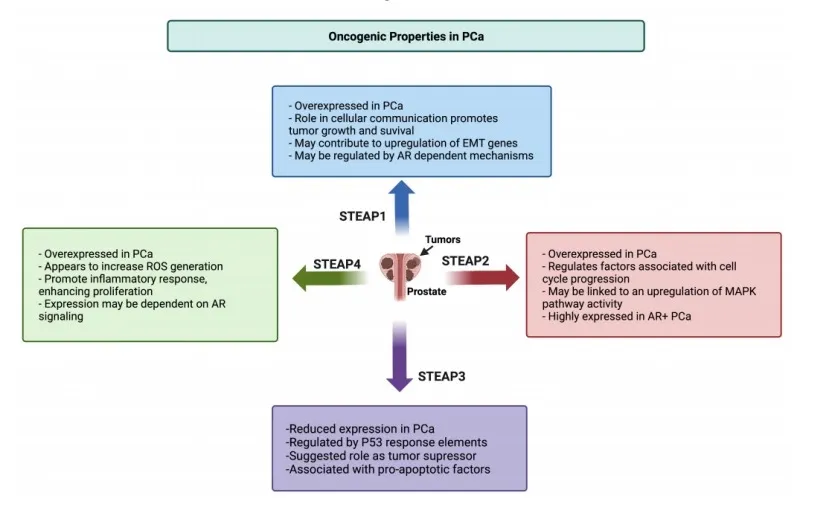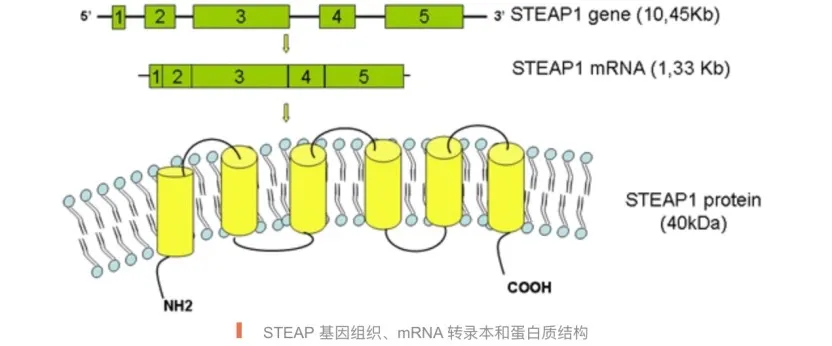02
2025
-
01
Xi News | A fully human Fab phage display library accelerates the screening of antibody molecules targeting STEAP1
STEAP1 belongs to the prostate transmembrane epithelial antigen (STEAP) family, which, besides STEAP1, includes STEAP2, STEAP3, and STEAP4. These proteins are involved in numerous biological processes, including apoptosis and proliferation, oxidative stress, and intracellular and extracellular molecular transport.
STEAP1 belongs to the prostate six-transmembrane epithelial antigen (STEAP) family, which, besides STEAP1, includes STEAP2, STEAP3, and STEAP4. These proteins are involved in many biological processes, including apoptosis and proliferation, oxidative stress, and intracellular and extracellular molecular transport. Studies have shown that STEAP1, STEAP2, and STEAP4 are overexpressed in PCa, while STEAP3 expression is decreased in PCa. STEAP1 was discovered earlier and is currently the most extensively studied. It is expressed in many tissues, but its expression level is higher in the secretory epithelial cells of prostate cancer.

STEAP1 consists of 6 transmembrane helices, contains 339 amino acids, has a molecular weight of 40 kilodaltons, and includes 6 transmembrane helical domains (Table 1). Its theoretical isoelectric point is 9.28. It has intracellular N-terminal and C-terminal domains, connected by three extracellular loops and two intracellular loops.
Table 1 - Sequences of the 6 transmembrane helices

Unlike other STEAP proteins, STEAP1 lacks the N-terminal NADPH-oxidoreductase (FNO) domain. Therefore, STEAP1 does not independently exhibit Fe3+ or Cu2+ reductase activity. The C-terminus contains a type b heme cofactor.

The difficulty in developing therapeutics targeting STEAP1 mainly lies in the problem of cross-binding. Although the family homology of STEAP1-4 is not high, the homology of the two variants of STEAP1, 1B1 and 1B2, with STEAP1 is 89% and 91% respectively. 1B1 is a truncated homolog of STEAP1 and is a four-transmembrane protein; 1B2 differs from STEAP1 in its amino acid sequence starting from the third extracellular domain (ECD) (different articles have different names for 1B1 and 1B2). Therefore, to develop molecules that bind only to STEAP1 and not to 1B1 or 1B2, the binding site can only be in the extracellular ECD3, which only has 15 amino acids. The development of specific molecules for this target is undoubtedly a major challenge.
Constream Biotech Length Bio has a unique fully human Fab synthetic phage library, which quickly helps companies interested in developing STEAP1-targeted drugs obtain lead antibody molecules. The advantages of screening with a fully human Fab synthetic phage library are mainly as follows:
1. For targets with high homology, highly specific antibody sequences can be obtained;
2. For rare and expensive antigens, only a few milligrams are needed for library screening;
3. Compared to animal immunization screening, library screening can quickly obtain positive clone sequences in 4-5 weeks.
Keywords:
Reference Drug | Antibody Drug | Instrument | Reagent



